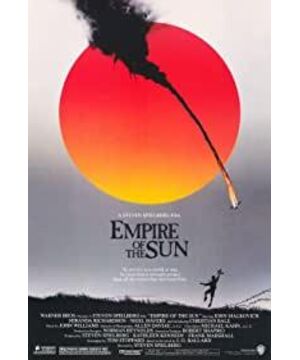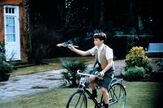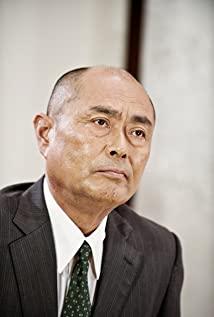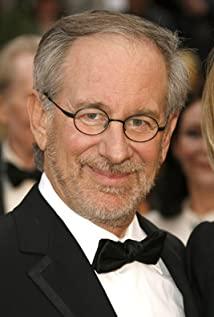"Empire of the Sun" directed by Spielberg is obviously divided into two parts. The first half is the shot of the Bund in Shanghai. Because China provided the actual scene of the Bund for shooting, it is self-evident that the scenes are genuine.
In the second half, as the little boy was imprisoned in the concentration camp in Longhua, the film also placed more shots in the internal conflicts of the characters. The performance of the environment is no longer the pursuit of reality as in the first half. In this part, the scene is seriously inaccurate.
Judging from the lens, you can see the distant horizon where the concentration camp is located. However, whether it is in the suburbs of Shanghai or in Suzhou, it is impossible to have such a continuous scene of mountain shadows.
What’s even more funny is that near the concentration camp, there is a six-story ancient Chinese-style tower. No people can be seen around the tower. It hangs alone on a corner of a large flat land. It is probably placed here to show that it is Chinese. Suzhou, such a set of gestures, is really ridiculous. Just like if the Statue of Liberty in the United States is placed at a certain estuary near the sea in China, can it mean that the place is New York? It is estimated that Chinese directors would not dare to risk the world, but Spielberg has the guts.
Scene from the movie "Nie Er"
Compare it with the stills of "Nie Er" and you will find out. The advantage of Chinese art is here.
"Empire of the Sun" was only filmed in China for 21 days. There are roughly two reasons for why the whole process was not filmed in China.
1. The concentration camp is the main plot of the movie. The shooting time is long, and there are aerial battles and bombing scenes. A huge location must be set up. The Chinese government does not allow shooting in China. ——This statement comes from the Chinese-American artist who designed the Spanish location of "Empire of the Sun".
2. In the concentration camp section, a large number of foreign actors and children are needed, and it is inconvenient to transport them from abroad to China. This is because of cost savings.
Of the two reasons, one is China's unwillingness and the other is the US's unwillingness, but overall, it should be the US's consideration. Because the United States was looking for locations in Spain long before it went to China for shooting. As for why it should be used as a location in Spain, this may be related to the fact that "Empire of the Sun" tried to get David Lean to shoot this movie, because David Lean used to shoot in Spain when he was filming "Lawrence of Arabia" in the early years. pass. Generally, a director chooses location, and likes to choose a place he was familiar with before, which may bring convenience in getting familiar with the road.
In the part shot in Shanghai, the scenes designed by the artists of the Chinese Shanghai Film Studio can be said to have reached the level of excellence.
The realistic situation of restoring the original appearance of history also allows this part of the group to perform a vast scene of more than 5,000 people, even in Spielberg's movies, it is unique. Later, with the widespread application of computer stunts, the filming technique of human-sea tactics has long been abandoned. Relatively speaking, manipulating manpower is more complicated and more difficult than manipulating computers.
Just like during the filming in Shanghai, the extravagant actors from various units, dressed in old-time clothes and dressed up in old times, will inevitably have a scene of laughter. On the eve of the filming, Spielberg also conducted some ideological education, to the effect that the present The scene of the Japanese devils invading China represents a painful period in history. The actors participating should also take it seriously and show the tragic situation in history.
Spielberg's short-term education still showed its due effect. Judging from the current lens, although the group performers have a large number of people, their performance is not satisfactory. Many people just follow the crowd and look indifferent. We have also noticed that some people still wear Lei Feng hats. The normal clothes of the Chinese in the 1980s.
Spielberg also knows that the extras in his shots can hardly achieve the kind of sad atmosphere he needs to create. Therefore, he adopted a quick editing method to make the Bund refugees flow continuously. In the midst of a fast-changing montage turmoil, it on the one hand gives the film a sense of rapid rhythm and the tension of the storm, on the other hand, it also effectively obscures the out-of-control and distorted details of the mass scene.
In the film, there is a huge portrait of Chiang Kai-shek, also from a Chinese artist. Originally, the United States invited an artist in London to draw a picture, and it was carried by a plane, but when it was hung up, the figure looked seriously deformed. , Not at all like the portrait of Chairman Chiang. There is no alternative but to ask a Chinese painter to repaint it. Later, the Chinese artist asked Zhao Xianrui, who is also an artist at the Shanghai Film Studio, to paint this huge portrait of Chiang Kai-shek.
It can be seen that this huge portrait is still very skilled, and the painter only took three days to paint it. Its author, Zhao Xianrui, does not have much reputation in the talented Shanghai Film Studio. He has worked as an artist in films such as: "The River and the Mountains", "Good Things Are Worse," "Colorful Morning Light", "Candid Video Tapes", "Wisdom Solving Strange Cases", etc. .
The US was very eye-catching about this portrait, and later invited an artist to paint another one and brought it back to the United States.
It was this statue of Chiang Kai-shek that once caused the danger that "Empire of the Sun" could not be shown in Taiwan. Because there were scenes in the movie showing that the Japanese took down the portrait of Chiang Kai-shek, it caused an uproar in Taiwan.
In contrast, the Chinese scene set up in Spain is obviously sloppy and perfunctory. The key reason is that the artist invited by the US is a Chinese designer who lacks understanding of Chinese culture and architecture, so the set set can only be described as nondescript. The Chinese artist is quite indecent about the counterparts in the foreign scenes in the same movie. He thinks that the designer "does not know much about Chinese architecture and history, the structure is wrong, and the background is distant mountains. How can it be like Shanghai?"
Even the US was not satisfied with the scene designed by the Chinese artist, and reworked it many times, which made the movie's budget several times higher. In Shanghai, not only did it not exceed the budget, but it also saved money.
One of the most absurd scenes in the movie is that Jimmy and the refugees from the concentration camp come to a stadium, which is called the Olympic Stadium in the novel.
It is located on the outskirts of the city and looks like a solitary prehistoric relic in the movie. When people walked in, they found that it was filled with all kinds of interior goods. The novelty of this scene has exceeded the scope of any realist imagination. From this we saw that the designer of this scene completely took it for granted and completed the scene design in the script.
Who is the designer invited by the US in Spain? In fact, this designer has a very high self-esteem. He once wrote a book named "Mediterranean Dawn Wind and Moon" under the name of Miguel Zhang. It was published by New Star Publishing in 2008, and his personal introduction is on the cover of the book.
His Chinese name is Zhang Baoqing. He was born in 1938. Before the liberation of Shanghai, he moved overseas and has since lived in Spain. In addition to "Empire of the Sun", he participated in movies such as "Dune", "Taipan" and "Kings of Heaven".
It should be said that this artist is obviously inadequate in restoring the face of China. However, Spielberg's tolerance for him is because Spielberg has never been 100% authentic. His character has An impulse to unfold his creative interpretation on the basis of roughly restoring the original appearance. As long as he can provide a general background according to his request and let him show his imagination freely on this background, he can basically accept it.
In the "Empire of the Sun" concentration camp, what Spielberg needs to express is the fate of the people in this environment, while the authenticity of the background is dispensable. In particular, he added a scene of a U.S. military bombing in the back part of the film. In the original novel, the bombing of American planes was only mentioned in general, and it did not constitute a complete emotional carnival like in the movie. This fiction is drawn to historical facts. In the previous part, Jimmy sent light signals to Japanese warships. There have been similar interpretations that caused Japan to invade the concession. In the original novel, there was no plot in which Jimmy caused the Japanese to open fire because the flashlight shook the Japanese ship. Obviously, in the movie, Spielberg treated the little boy as a god, and every move of the little boy, Like the butterfly effect, they caused the development of historical events and witnessed an epoch-making amazing move.
It can be seen that Spielberg, as a director, used his overall ability to coherent the film to form a complete and continuous whole movie, although the filming locations in China are different from those in Spain and the United Kingdom. However, the director’s mirror-moving style is the same, so that the whole movie still deeply imprints the traces of Spielberg’s personality.
It is its director that determines the style and characteristics of the movie. It is shown in "Empire of the Sun". Although the first half is known for its realistic rigor and the second half wins with freehand pictographs, they are all combined by Spielberg and cannot be seen. There are fissures and a transparent finish, and there are many things worthy of our study and research.
View more about Empire of the Sun reviews









